THE MALAYSIAN DILEMMA -
THE DISEASE AND THE CURE
by D.P. Pangai
13.Sep.1998What many Malaysians failed to realize then is that this sick joke was on them.
Whatever the case may be, it had rapidly become apparent to Malaysians that in Mahathir they had found a modern-day Fir’aun or Pharaoh, and Daim was his Qaarun. Anwar was the outsider in the pack and never really found his niche.
It is rather difficult to talk about Reformasi in a den of thieves.
Such exercises came to a temporary slowdown, in fact almost dead-stop, when recession hit Malaysia in the mid-1980’s by which time Fleet’s total liabilities had gone into the billion ringgit range while UMNO had been deregistered (based on a legal strategy advised by his lawyers and adopted by Mahathir himself) as a result of the fight between Mahathir and Razaleigh.
UMNO’s assets, including its shares in Fleet and other investments, were handed over to the Official Assignee while Mahathir, who had won by a narrow margin, consolidated his grip on power by forming the New UMNO and Razaleigh was forced into the opposition and formed Semangat ’46, the Spirit of ’46, a reference to the birth of UMNO amidst opposition to the Malayan Union plan which the British had proposed to impose upon Malaya after World War II.
The Malaysian and Singapore stock markets crashed in October 1987 as a result of the collapse of Pan-El, a company which had come under the control of the President of MCA at the time, Tan Koon Swan, who went to prison in Singapore for certain wrongdoings related to the collapse. Was Tan Koon Swan merely a scapegoat? Could he have been one of Daim’s numerous "nominees"?
Whatever the case, these and other similar wrongdoings were merely the symptoms of the general and wider disease affecting Malaysian business and politics at the time, and which would return to haunt Malaysia with a vengeance and at far greater cost almost exactly 10 years later, a cost which the Malaysian public is not able nor should be made to bear.
Reformasi is beginning to look brighter and brighter.
Whatever the case may be, it had rapidly become apparent to Malaysians that in Mahathir they had found a modern-day Fir’aun or Pharaoh, and Daim was his Qaarun. Anwar was the outsider in the pack and never really found his niche.
It is rather difficult to talk about Reformasi in a den of thieves.
Such exercises came to a temporary slowdown, in fact almost dead-stop, when recession hit Malaysia in the mid-1980’s by which time Fleet’s total liabilities had gone into the billion ringgit range while UMNO had been deregistered (based on a legal strategy advised by his lawyers and adopted by Mahathir himself) as a result of the fight between Mahathir and Razaleigh.
UMNO’s assets, including its shares in Fleet and other investments, were handed over to the Official Assignee while Mahathir, who had won by a narrow margin, consolidated his grip on power by forming the New UMNO and Razaleigh was forced into the opposition and formed Semangat ’46, the Spirit of ’46, a reference to the birth of UMNO amidst opposition to the Malayan Union plan which the British had proposed to impose upon Malaya after World War II.
The Malaysian and Singapore stock markets crashed in October 1987 as a result of the collapse of Pan-El, a company which had come under the control of the President of MCA at the time, Tan Koon Swan, who went to prison in Singapore for certain wrongdoings related to the collapse. Was Tan Koon Swan merely a scapegoat? Could he have been one of Daim’s numerous "nominees"?
Whatever the case, these and other similar wrongdoings were merely the symptoms of the general and wider disease affecting Malaysian business and politics at the time, and which would return to haunt Malaysia with a vengeance and at far greater cost almost exactly 10 years later, a cost which the Malaysian public is not able nor should be made to bear.
Reformasi is beginning to look brighter and brighter.
Malaysian politicians and businessmen had begun digging holes and they could never really stop as they kept on digging bigger and bigger holes to cover up previous holes. It became a vicious circle out of which Mahathir, Daim and their cronies never got out of and the whole country would suffer (is now suffering) as a consequence. The holes would collectively eventually become so large that even a hole the size of the aborted (or postponed) Bakun Dam which would have created a lake - or an inland sea rather - the size of Singapore would not have been enough to cover them all up.
Within 2 years, however, the end of this particular recession was in sight for Malaysia, and Daim as Finance Minister took full credit for masterminding Malaysia’s exit from recession through a series of economic austerity and stimulatory measures. These measures in reality laid the groundwork and (illusory) foundations upon which the subsequent Malaysian economic "miracle" was built. As a result, Malaysia’s so-called economic "fundamentals" were never really as strong as the government made them out to be, and Malaysia became just as vulnerable to speculative attack on its stock markets and currencies as countries like Thailand and Indonesia (which were deemed to have far higher rates or corruption and other abuses).
Mahathir and Daim had far more grandiose plans for Malaysia, and Malaysia’s drive towards industrialized nation status by 2020 was formally launched by Mahathir as his "Vision 2020". A cartoon by Lat, Malaysia’s most well-known cartoonist, may have been more prophetic than people realized then - it showed a man holding tickets with the words "20 big" and "20 small" in his hand (his version of "Vision 2020"), referring to certain gambling schemes run by Magnum, a company controlled by MCA and Sports Toto, a company controlled by a Daim associate, Vincent Tan, who also controls the KL monorail project (now re-started with a government soft loan) as well as a controversial waste disposal privatization project through a company known as Indah Water.
Was it really a gamble, and is it one which Mahathir and Malaysia now appear to have lost or can Mahathir and Daim still pull a few tricks out of their hats, since as it would appear tricks are all they have left?
All available information points to the fact that it was a gamble. This damning indictment can hardly be avoided by anyone having any independence of mind uninfluenced by foreign agents and local propaganda.
The country’s future was put at stake on a scale again unprecedented in its history and all the not insubstantial gains of the past were also put at risk by imprudent government policies which actually benefited a few while only appearing to benefit the many. The inherent inequities of the system thus perpetrated a false sense of progress and development.
While there were tangible "benefits" in the form of the new roads, highways, airports, ports, buildings and other infrastructures, these eventually all had to be paid for by consumers and other users, who also had to pay for the additional hidden costs in terms of the moneys which were siphoned out of these projects for political and conspicuous consumption purposes by a selected few (the cronies).
This was boom time, and all well-connected individuals made money. Those not so well-connected could only look on and hope for the crumbs that were left behind. Mahathir, Daim and their cronies did not really seem to care one way or the other, although they kept reassuring everyone that what they were doing was in the interests of all the people.
Within 2 years, however, the end of this particular recession was in sight for Malaysia, and Daim as Finance Minister took full credit for masterminding Malaysia’s exit from recession through a series of economic austerity and stimulatory measures. These measures in reality laid the groundwork and (illusory) foundations upon which the subsequent Malaysian economic "miracle" was built. As a result, Malaysia’s so-called economic "fundamentals" were never really as strong as the government made them out to be, and Malaysia became just as vulnerable to speculative attack on its stock markets and currencies as countries like Thailand and Indonesia (which were deemed to have far higher rates or corruption and other abuses).
Mahathir and Daim had far more grandiose plans for Malaysia, and Malaysia’s drive towards industrialized nation status by 2020 was formally launched by Mahathir as his "Vision 2020". A cartoon by Lat, Malaysia’s most well-known cartoonist, may have been more prophetic than people realized then - it showed a man holding tickets with the words "20 big" and "20 small" in his hand (his version of "Vision 2020"), referring to certain gambling schemes run by Magnum, a company controlled by MCA and Sports Toto, a company controlled by a Daim associate, Vincent Tan, who also controls the KL monorail project (now re-started with a government soft loan) as well as a controversial waste disposal privatization project through a company known as Indah Water.
Was it really a gamble, and is it one which Mahathir and Malaysia now appear to have lost or can Mahathir and Daim still pull a few tricks out of their hats, since as it would appear tricks are all they have left?
All available information points to the fact that it was a gamble. This damning indictment can hardly be avoided by anyone having any independence of mind uninfluenced by foreign agents and local propaganda.
The country’s future was put at stake on a scale again unprecedented in its history and all the not insubstantial gains of the past were also put at risk by imprudent government policies which actually benefited a few while only appearing to benefit the many. The inherent inequities of the system thus perpetrated a false sense of progress and development.
While there were tangible "benefits" in the form of the new roads, highways, airports, ports, buildings and other infrastructures, these eventually all had to be paid for by consumers and other users, who also had to pay for the additional hidden costs in terms of the moneys which were siphoned out of these projects for political and conspicuous consumption purposes by a selected few (the cronies).
This was boom time, and all well-connected individuals made money. Those not so well-connected could only look on and hope for the crumbs that were left behind. Mahathir, Daim and their cronies did not really seem to care one way or the other, although they kept reassuring everyone that what they were doing was in the interests of all the people.
As the saying goes, it was not what you knew - your technical know-how - but who you knew, that mattered in Malaysia at that time. The Economic Planning Unit of the Prime Minister’s Department which was charged with overseeing the privatization process was the recipient and processor of many privatization proposals became known as the Economic Photostating Unit as proposals by less-connected individuals and their companies were rejected but turned up later and were approved under the different names of better-connected individuals and their companies.
(The head of the Economic Photostating Unit has now been appointed the Governor of the Central Bank, after the forced resignations of the former Governor and Deputy Governor which took place before Anwar's dismissal).
The whole process lacked transparency and accountability. There were no official guidelines for privatization and no process of appeal if one’s proposal was rejected or delayed or just disappeared. Officially, anyone could come out with a proposal and if the ideas behind it were unique and viability of the project could be established, then that person or company was given a right of exclusivity to develop and privatize such a project.
Unofficially, these projects were only given to cronies and those with the right connections. Mahathir and Daim controlled or had a hand in almost every privatized project or other projects which required government approval. The lucrative access to the top leadership of the ruling coalition was selectively blocked and jealously guarded by the cronies and administrators all the way down the line. The cronies became the new breed of Muslims, called New Malays or Melayu Baru, a term which was to take on derisive and negative connotations because of their many misdeeds.
There are many examples of the way existing rules were bent or new rules and policies formulated to favour cronies and their businesses. This resulted in the singular failure of the much-vaunted Malaysian regulatory system. One of these was the manner in which Halim Saad, then still a young manager who had been groomed by Daim in Peremba, obtained control of a large chunk of the UMNO assets from the Official Assignee without any open tender being called, including controlling shares in a suspended public-listed company known as United Engineers.
Unofficially, these projects were only given to cronies and those with the right connections. Mahathir and Daim controlled or had a hand in almost every privatized project or other projects which required government approval. The lucrative access to the top leadership of the ruling coalition was selectively blocked and jealously guarded by the cronies and administrators all the way down the line. The cronies became the new breed of Muslims, called New Malays or Melayu Baru, a term which was to take on derisive and negative connotations because of their many misdeeds.
There are many examples of the way existing rules were bent or new rules and policies formulated to favour cronies and their businesses. This resulted in the singular failure of the much-vaunted Malaysian regulatory system. One of these was the manner in which Halim Saad, then still a young manager who had been groomed by Daim in Peremba, obtained control of a large chunk of the UMNO assets from the Official Assignee without any open tender being called, including controlling shares in a suspended public-listed company known as United Engineers.
Thus these assets were taken away from direct control of the New UMNO and placed in the hands of an individual who had no official connection with UMNO. Officially Daim as UMNO Treasurer had no control over United Engineers and other UMNO assets, but unofficially he had full control and Halim reported to him in all matters. These were open secrets in Malaysia, and foreigners also came to realize them in time.
Mahathir, Daim and their cronies carried on in full confidence, seemingly unaware but perhaps more uncaring of the growing discontent among Malaysians that these and many other similar actions induced.
Many other UMNO-related companies - and those which were not as well - fell (or were arranged to fall) into the clutches of this group of young managers known as Daim’s boys, including Fleet, Landmarks, Peremba (which had been sold to the Urban Development Authority then sold to Fleet and later was taken over in a so-called management buy-out). To a man all of them - and later others as well - reported to Daim who master-minded every scheme or corporate manoeuvre which they implemented. To document every such manoeuvre (which is possible) would probably require a whole book.
The next step was to ensure an ample and continuous source of income from which political funds could be generated. Towards this end, and as part of the so-called privatization policy implemented by the government, again without going through the normal tender process, United Engineers was given the North-South Highway project (and the right to collect tolls for 20 years) amidst some heavy controversy which the government managed to brush aside using its parliamentary majority.
This project was leveraged through a series of share swaps to enable the takeover of a score of public-listed companies which today form the Renong Group controlled in name by Halim. The stupid banks (also acting under political instruction) were all too ready to lend money to support these transactions and the projects that came to be taken over by companies such as Renong.
So today it should come as no surprise that Renong and other companies in the group controlled by Halim reportedly have bank borrowings totalling in excess of RM17 billion and total liabilities which are far greater than this figure. One of them, the Time Engineering group (with bank borrowings exceeding RM1.5 billion) has already sought court protection from its creditors while working out a proposed scheme of arrangement with them. The creditors can expect a huge discount of the debts owing to them.
Mahathir, Daim and their cronies carried on in full confidence, seemingly unaware but perhaps more uncaring of the growing discontent among Malaysians that these and many other similar actions induced.
Many other UMNO-related companies - and those which were not as well - fell (or were arranged to fall) into the clutches of this group of young managers known as Daim’s boys, including Fleet, Landmarks, Peremba (which had been sold to the Urban Development Authority then sold to Fleet and later was taken over in a so-called management buy-out). To a man all of them - and later others as well - reported to Daim who master-minded every scheme or corporate manoeuvre which they implemented. To document every such manoeuvre (which is possible) would probably require a whole book.
The next step was to ensure an ample and continuous source of income from which political funds could be generated. Towards this end, and as part of the so-called privatization policy implemented by the government, again without going through the normal tender process, United Engineers was given the North-South Highway project (and the right to collect tolls for 20 years) amidst some heavy controversy which the government managed to brush aside using its parliamentary majority.
This project was leveraged through a series of share swaps to enable the takeover of a score of public-listed companies which today form the Renong Group controlled in name by Halim. The stupid banks (also acting under political instruction) were all too ready to lend money to support these transactions and the projects that came to be taken over by companies such as Renong.
So today it should come as no surprise that Renong and other companies in the group controlled by Halim reportedly have bank borrowings totalling in excess of RM17 billion and total liabilities which are far greater than this figure. One of them, the Time Engineering group (with bank borrowings exceeding RM1.5 billion) has already sought court protection from its creditors while working out a proposed scheme of arrangement with them. The creditors can expect a huge discount of the debts owing to them.
The irony of it is that until today UMNO has still not repaid to the banks (principally Bank Bumiputra and Malayan Banking) loans taken for the UMNO HQ building in Kuala Lumpur - the so-called Putra World Trade Centre and Menara Dato’ Onn.
(To be continued...Part 5)










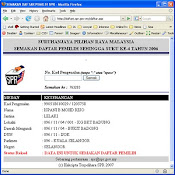















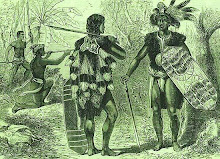





















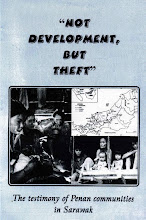
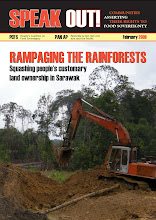









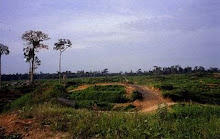

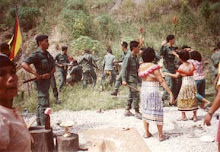





















No comments:
Post a Comment